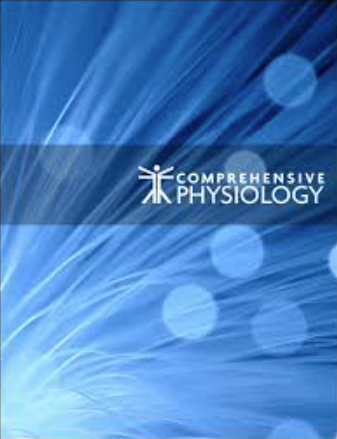下载PDF
{"title":"Energetic Stress-Induced Metabolic Regulation by Extracellular Vesicles.","authors":"Clair Crewe","doi":"10.1002/cphy.c230001","DOIUrl":null,"url":null,"abstract":"<p><p>Recent studies have demonstrated that extracellular vesicles (EVs) serve powerful and complex functions in metabolic regulation and metabolic-associated disease, although this field of research is still in its infancy. EVs are released into the extracellular space from all cells and carry a wide range of cargo including miRNAs, mRNA, DNA, proteins, and metabolites that have robust signaling effects in receiving cells. EV production is stimulated by all major stress pathways and, as such, has a role in both restoring homeostasis during stress and perpetuating disease. In metabolic regulation, the dominant stress signal is a lack of energy due to either nutrient deficits or damaged mitochondria from nutrient excess. This stress signal is termed \"energetic stress,\" which triggers a robust and evolutionarily conserved response that engages major cellular stress pathways, the ER unfolded protein response, the hypoxia response, the antioxidant response, and autophagy. This article proposes the model that energetic stress is the dominant stimulator of EV release with a focus on metabolically important cells such as hepatocytes, adipocytes, myocytes, and pancreatic β-cells. Furthermore, this article will discuss how the cargo in stress-stimulated EVs regulates metabolism in receiving cells in both beneficial and detrimental ways. © 2023 American Physiological Society. Compr Physiol 13:5051-5068, 2023.</p>","PeriodicalId":10573,"journal":{"name":"Comprehensive Physiology","volume":"13 3","pages":"5051-5068"},"PeriodicalIF":5.2000,"publicationDate":"2023-06-26","publicationTypes":"Journal Article","fieldsOfStudy":null,"isOpenAccess":false,"openAccessPdf":"https://www.ncbi.nlm.nih.gov/pmc/articles/PMC10414774/pdf/nihms-1919540.pdf","citationCount":"0","resultStr":null,"platform":"Semanticscholar","paperid":null,"PeriodicalName":"Comprehensive Physiology","FirstCategoryId":"3","ListUrlMain":"https://doi.org/10.1002/cphy.c230001","RegionNum":2,"RegionCategory":"医学","ArticlePicture":[],"TitleCN":null,"AbstractTextCN":null,"PMCID":null,"EPubDate":"","PubModel":"","JCR":"Q1","JCRName":"PHYSIOLOGY","Score":null,"Total":0}
引用次数: 0
引用
批量引用
Abstract
Recent studies have demonstrated that extracellular vesicles (EVs) serve powerful and complex functions in metabolic regulation and metabolic-associated disease, although this field of research is still in its infancy. EVs are released into the extracellular space from all cells and carry a wide range of cargo including miRNAs, mRNA, DNA, proteins, and metabolites that have robust signaling effects in receiving cells. EV production is stimulated by all major stress pathways and, as such, has a role in both restoring homeostasis during stress and perpetuating disease. In metabolic regulation, the dominant stress signal is a lack of energy due to either nutrient deficits or damaged mitochondria from nutrient excess. This stress signal is termed "energetic stress," which triggers a robust and evolutionarily conserved response that engages major cellular stress pathways, the ER unfolded protein response, the hypoxia response, the antioxidant response, and autophagy. This article proposes the model that energetic stress is the dominant stimulator of EV release with a focus on metabolically important cells such as hepatocytes, adipocytes, myocytes, and pancreatic β-cells. Furthermore, this article will discuss how the cargo in stress-stimulated EVs regulates metabolism in receiving cells in both beneficial and detrimental ways. © 2023 American Physiological Society. Compr Physiol 13:5051-5068, 2023.

 求助内容:
求助内容: 应助结果提醒方式:
应助结果提醒方式:


